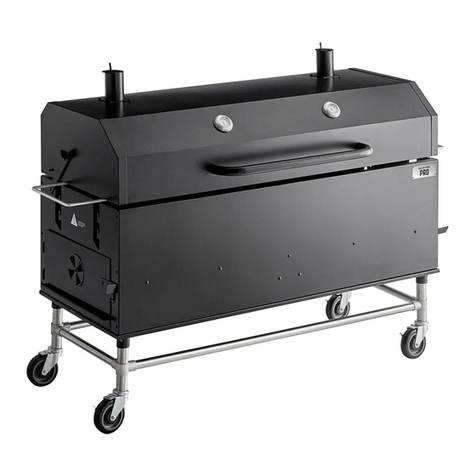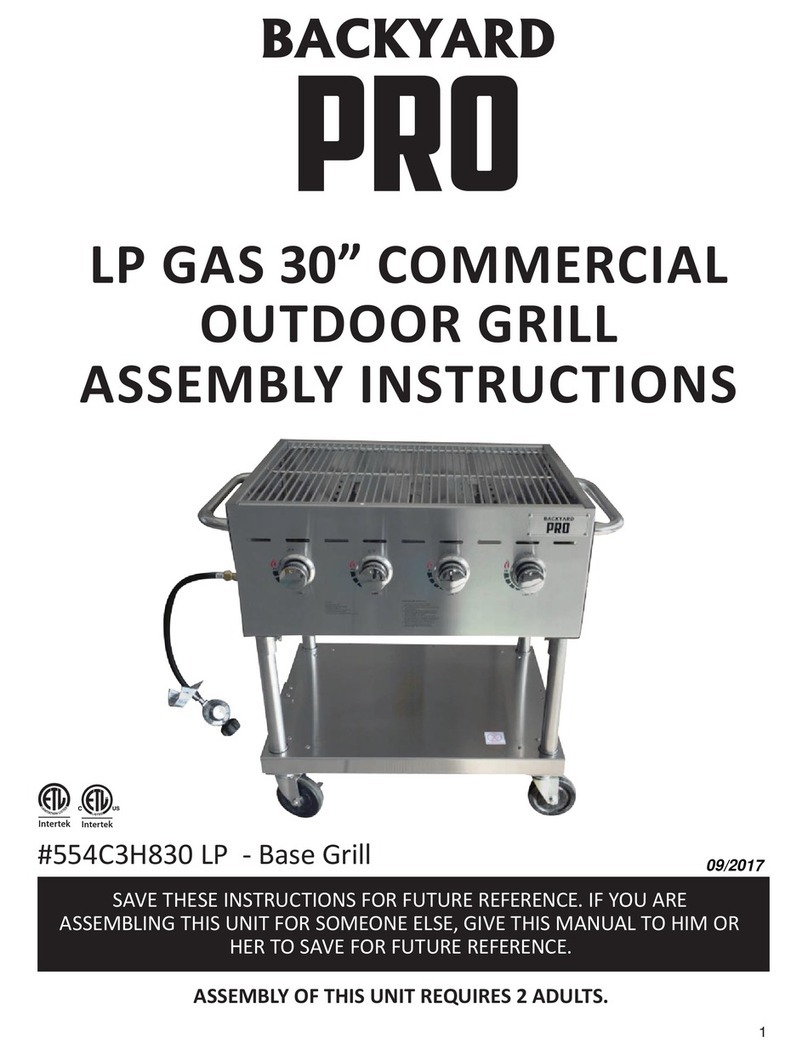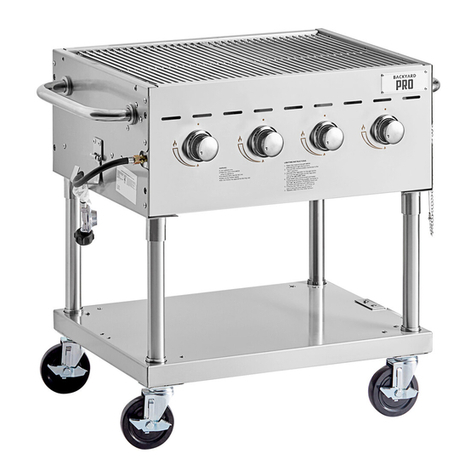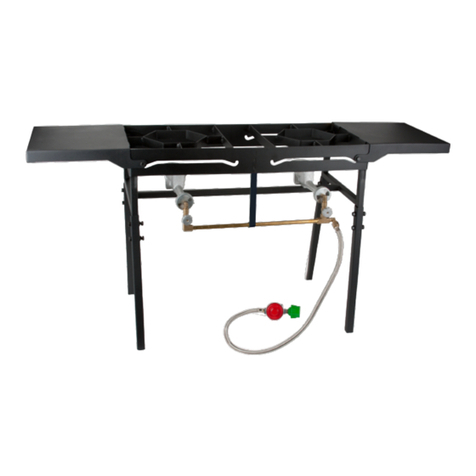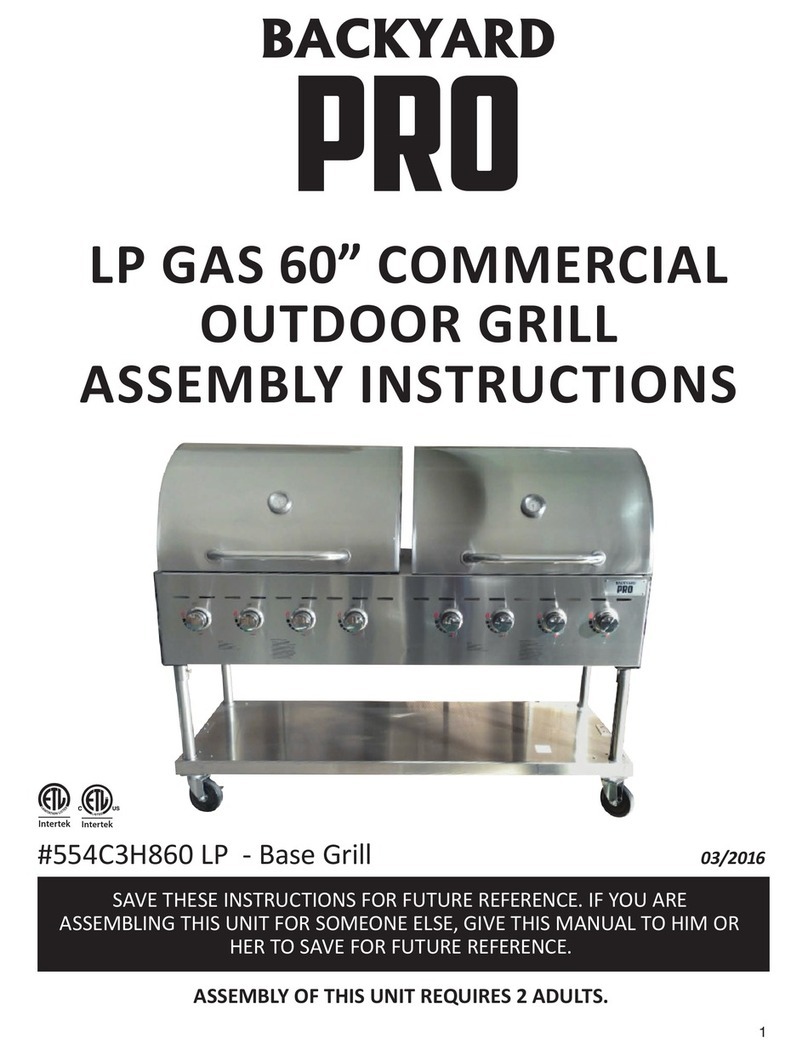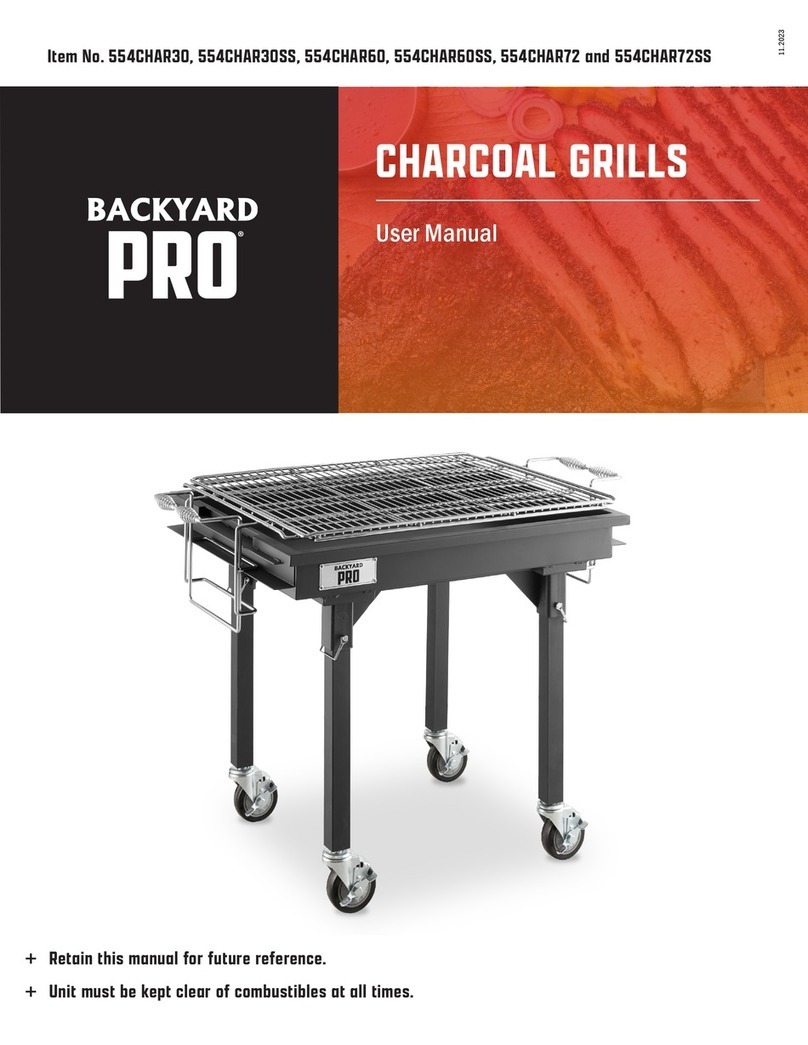
5
Your new Backyard Pro Grill has been designed and manufactured to high quality standards. It will
provide you with many years of enjoyment with a minimal amount of maintenance. Please keep in
mind the following FOR YOUR SAFETY.
OPERATION
1. Your gas grill requires reasonable care during operaon. It will be hot during cooking and cleaning.
You should never leave the grill unaended or move the grill when in use.
2. Children should never use your gas grill. Keep younger children and pets away when in use.
3. Only use your gas grill outside in a well-venlated area. Never use indoors in any building, garage,
shed, or under any type of ammable canopy or overhang.
4. Ensure your grill is on level ground and the locking casters are locked before use.
5. Turn all gas valves o should the burners go out when cooking.
6. Do not lean over the grill or touch the edges of the rebox, wind screen or griddle top when in use.
7. Turn the burners o, and shut o the LP cylinder should a grease re occur.
8. Do not obstruct the ow of combuson and venlaon air to this grill.
9. Keep the outdoor cooking gas appliance area clear and free from combusble materials, gasoline,
and other ammable vapors and liquids.
10. Keep the venlaon openings of the cylinder enclosure free and clear from debris.
11. Do not put a barbecue cover or other ammable material in the storage area of this grill.
12. Do not use charcoal briquees, lava rock, or any type of ceramic product in the gas secon of this
grill.
13. Do not install or use on or in a recreaonal vehicle and/or boats.
LP Gas and Cylinder Informaon
Your new gas grill operates on LP (Liquid Petroleum) Gas. It is odorless, colorless, and non-toxic when
produced. You can smell LP gas as it has been given an odor similar to roen cabbage for your safety.
Your grill uses the newest and safest LP Gas Cylinder.
1. O.P.D. (Overll Protecon Device) – prevents accidental gas leaks
caused by overlling of the tank. Each tank contains a oat that
closes the input valve when the tank is 80% full. This allows room
for the LP gas to expand in hot temperatures. A triangular hand wheel
disnguishes this type of tank.
2. O.C.C.1 Type 1 Quick Connect Valve – provides fast tank hook-ups and
requires only to be ghtened by hand.
TRANSPORTATION AND STORAGE
1. The cylinder used must include a collar to protect the cylinder valve.
2. Do not store a spare LP-gas cylinder under or near this appliance.
3. Never ll the cylinder beyond 80 percent full;
4. If the informaon in “2” and “ 3” is not follow exactly, a re
Causing death or serious injury may occur.
5. Always transport in an upright posion.
6. Do not smoke when transporng your cylinder.
7. Place dust cap on cylinder valve outlet whenever the cylinder is not in use.
Only install the type of dust cap on the cylinder valve outlet that is provided
with the cylinder valve.
Other types of cap or plugs may result in leakage of propane.
General Informaon and Instrucons
Triangular hand wheel
Dust cap
